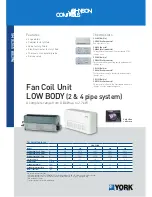
8
A.0500.501 – IM-TGGS/05.01 EN (03/2013)
1.3 Safety
1.3.1 General
Important!
The pump must not be used for other purposes than recommended and quoted for without
consulting your local supplier.
A pump must always be installed and used in accordance with existing national and local sanitary
and safety regulations and laws.
When ATEX pump/pump unit is supplied, the separate ATEX manual must be considered
• Always wear suitable safety clothing when handling the pump.
• Anchor the pump properly before start-up to avoid personal injury and/or damage to the pump
unit.
• Install shut-off valves on both sides of the pump to be able to shut off the inlet and outlet before
service and maintenance. Check to see that the pump can be drained without injuring anyone
and without contaminating the environment or nearby equipment.
• Make sure that all movable parts are properly covered to avoid personal injury.
• All electrical installation work must be carried out by authorized personnel in accordance with
EN60204-1 and/or local regulations. Install a lockable circuit breaker to avoid inadvertent
starting. Protect the motor and other electrical equipment from overloads with suitable
equipment. The electric motors must be supplied with ample cooling air.
In environments where there is risk of explosion, motors classified as explosion-safe must be
used, along with special safety devices. Check with the governmental agency responsible for
such precautions.
• Improper installation can cause fatal injuries.
• Dust, liquids and gases that can cause overheating, short circuits, corrosion damage and fire
must be kept away from motors and other exposed equipment.
• If the pump handles liquids hazardous for person or environment, some sort of container must
be installed into which leakage can be led. All (possible) leakage should be collected to avoid
contamination of the environment.
• Keep arrows and other signs visible on the pump.
• If the surface temperature of the system or parts of the system exceeds 60°C, these areas must
be marked with warning text reading ”Hot surface” to avoid burns.
• The pump unit must not be exposed to rapid temperature changes of the liquid without prior
pre-heating/pre-cooling. Big temperature changes can cause crack formation or explosion,
which in turn can entail severe personal injuries.
• The pump must not operate above stated performance. See section 3.5 Main characteristics.
• Before intervening in the pump/system, the power must be shut off and the starting device be
locked. When intervening in the pump unit, follow the instructions for disassembly/assembly,
chapter 4.0. If the instructions are not followed, the pump or parts of the pump can be damaged.
It will also invalidate the warranty.
• Gear pumps may never run completely dry. Dry running produces heat and can cause damage to
internal parts such as bush bearings and shaft seal. When dry running is required, the pump has
e.g. to be run a short time with liquid supply.
Note!
A small quantity of liquid should remain in the pump to ensure lubrication of internal parts.
If there is a risk for dry running for a longer period, install a suitable dry running protection.
Consult your local supplier.
• If the pump does not function satisfactorily, contact your local supplier.









































